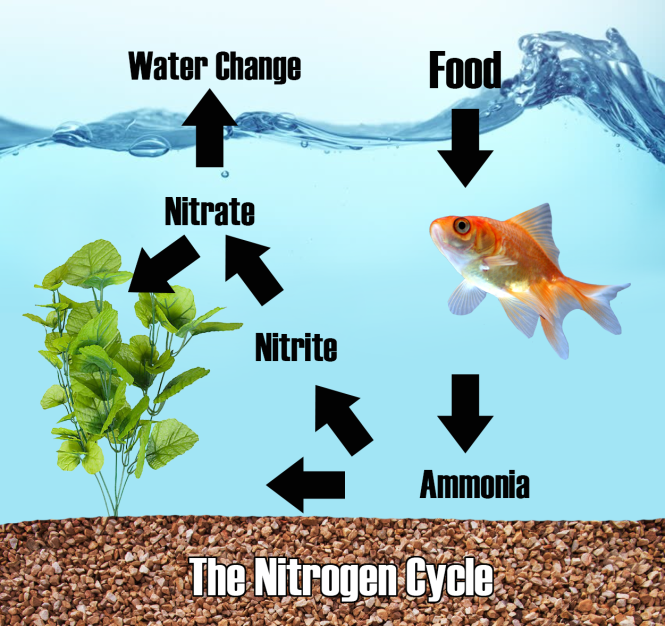The nitrogen cycle is one of the most important parts of fish keeping. However, it is often misunderstood or ignored completely. If you’ve ever had a major die-off of fish after starting a brand new tank, it’s probably due to the nitrogen cycle not taking place. Although it may seem complex, the nitrogen cycle is very easy to understand! We’ll walk you through it.

- Fish are fed. Most fish should only be fed every other day or every two days. Many fish food products state that fish should be fed 3 times a day, which is far too much! Their business is selling food, not keeping fish. Food then becomes waste. The more you feed your fish, the more waste will be present in the tank. Additionally, any death that takes place in the tank will produce waste.
- The first form of waste is toxic ammonia, NH₃. Heavy feeding and die-offs will create dangerous ammonia spikes, especially in unestablished tanks. This is because bacteria is needed to break down ammonia into a safe form. Otherwise, it accumulates, killing fish. This is often called “new tank syndrome”.
- In established tanks, bacteria break down the ammonia into another form of waste called nitrites, NO2−. This is not safe, but it is slightly less toxic than ammonia. The presence of nitrite in a new tank shows that the tank is just beginning to cycle.
- The bacteria break down the nitrite into the final form of waste, nitrates, NO−
3. Nitrates are the least dangerous form of waste. It is natural for tanks to have a low amount of nitrates present in the water. The presence of a small level of nitrates indicates that the nitrogen cycle is complete and the tank is established!
If a high level of nitrates and/or nitrites are present in the tank, you must do a water change. That is the only way to remove them. No chemical treatment on the market will replace a water change! We sell test kits in addition to offering free water testing in-store, so you can always monitor the health of your tank.
To avoid “new tank syndrome”, we recommend placing a small amount of food into a new tank and then allowing it to sit for a few weeks. This will safely allow bacteria to grow without risking the life of a fish. Saltwater aquariums and small aquariums, especially those 10 gallons or under, highly benefit from this method of cycling. Larger systems, especially freshwater tanks 40 gallons or higher, can often be cycled with a fish or two inside the aquarium. These large systems are more stable and will be less likely to face an ammonia crash. A little patience when starting a tank will help avoid many headaches down the road!
